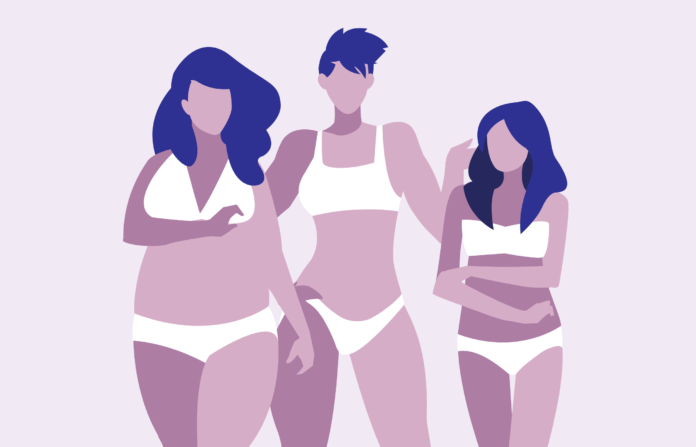For many, the body positivity movement is a long-awaited shift in beauty standards. When I was young, I loved collecting fashion magazines. In retrospect, they heavily influenced my perception that thin models were an ideal I needed to achieve. As I grew up, I realized I did not need to change, but rather the fashion industry needed to be more inclusive.
To an extent, it now is. Companies are either dropping their skinny models or adding models with characteristics once considered to be imperfections—like fat rolls, gap teeth, stretch marks, and cellulite.
However, many of these same companies are only body inclusive on the surface as a marketing tactic, without actually altering elements of their business to reflect inclusivity, such as their sizing charts. This results in the perpetuation of the belief that thin women are the standard of beauty.
Many have caught onto the commodification of the body positivity movement, including academics. One 2016 study by a researcher at York University looked into how companies were using Instagram to exploit ideas of positive body image in order to garner sales.
According to the study, companies pay prominent advocates of the movement “to promote and endorse products throughout their images” in order to capitalize off its growing popularity and influence.
This is surface-level work. Fashion companies may be optimizing their brand image by including “plus-size” models, but are doing little transitional work into making these products actually body inclusive. This is clear in the lack of inclusive sizing of many women’s brands.
Companies need to take the average sizes of their customer base into consideration. Though Canadian statistics about average women clothing sizes are limited, one 2012 article in Maclean’s reported the average Canadian woman wears a size 33 pants. This number—based on approximate waist measurement in inches—generally lands within the “large” range of most mainstream small-to-extra-large sizing used by many clothing brands.
Companies must do better than this. Extending sizing charts to a size 18—like Nasty Gal did in 2018—or including a plus-size section is not enough. This is especially problematic considering the waist size for Nasty Gal’s size 18 clothing is 41 inches, while the average waist size for Canadian women is around 34 inches—with only a seven-inch difference between the two. A size 18 is too close to the average to be considered the threshold from “regular” to “plus-size.”
When companies work towards making their sizing charts more inclusive, they often end up depicting the larger sizes as the “other” by putting plus-size clothing in less prominent areas of the store. As a result, the term “plus” becomes discriminatory.
According to MOTIF, an organization that provides fashion industry expertise, this differentiation often results in companies arranging their stores and sites in a way that sends a message that is counterintuitive to body positivity.
“[P]lus-size sections are often relegated to hidden corners or less accessible areas. As if to say that these customers are different and need to be separated from everybody else,” MOTIF wrote.
Companies should be working together towards universality in women’s clothing sizes. It is ridiculous that someone can wear an XS from one brand but then wear a XL from another. It is misleading when companies claim they offer an inclusive range of sizes, but their S fits like a standard XXS and their XXL fits like an L. This lack of transparency is frustrating for customers of all sizes, especially when online shopping.
The body positivity movement has come so far, yet much work still needs to be done. Companies should not be praised for being body positive when hiring “plus-size” models and calling it a day.
While hiring a diverse group of models is important, constructing a business model that reflects this diversity is equally as important, since it is the business model—particularly clothing sizes—consumers will directly interact with.
Featured graphic by Pascale Malenfant.






